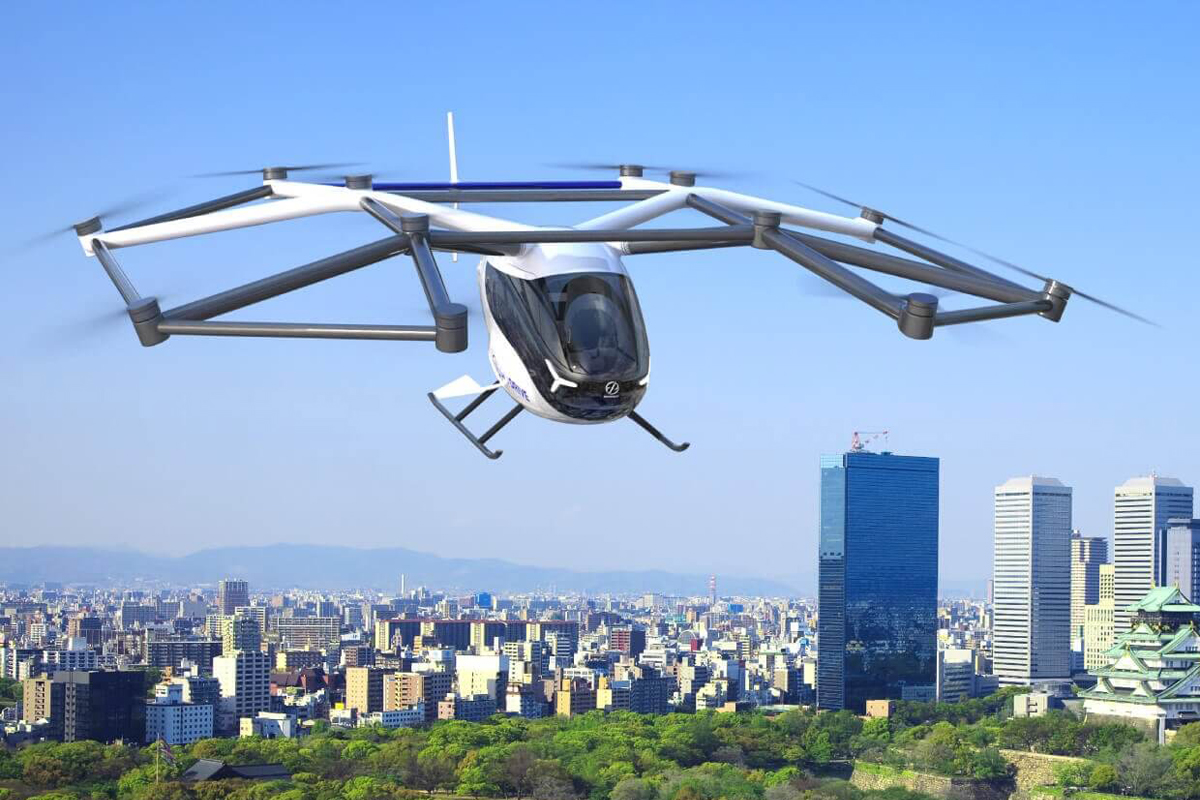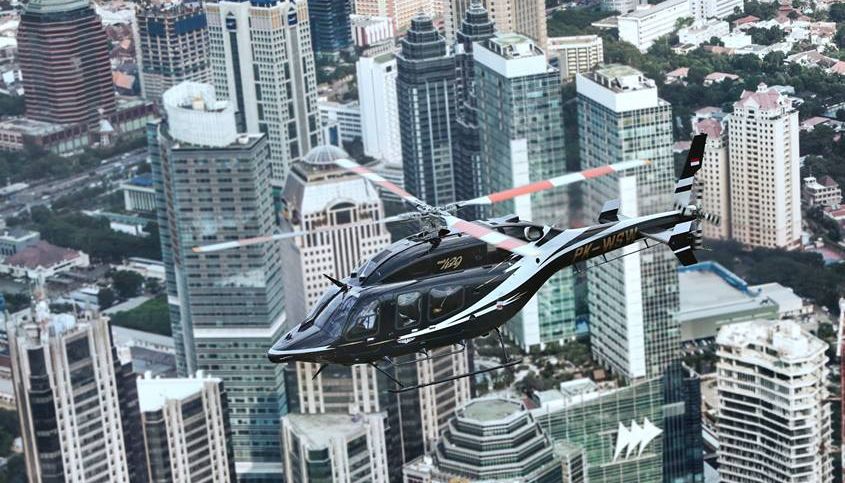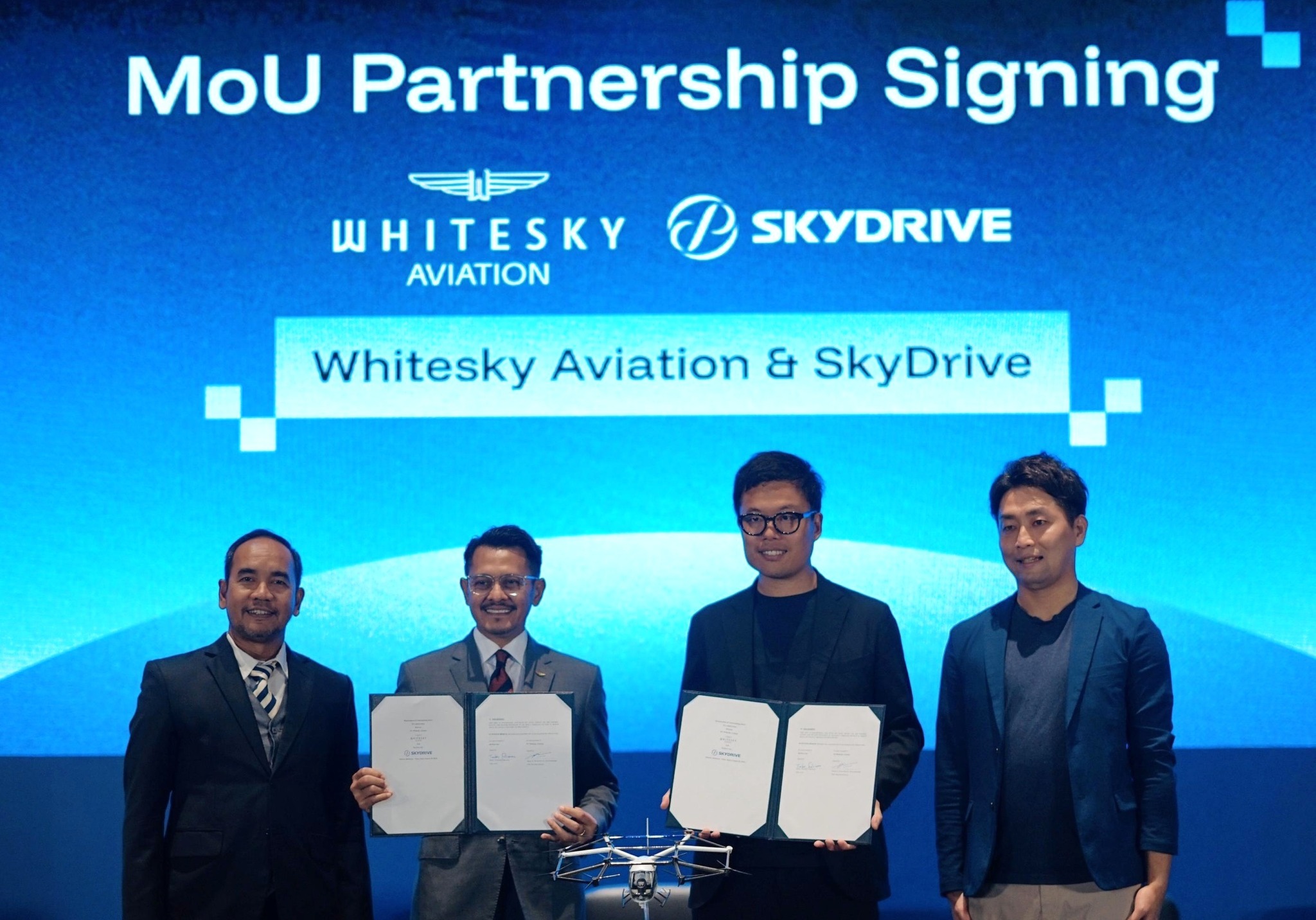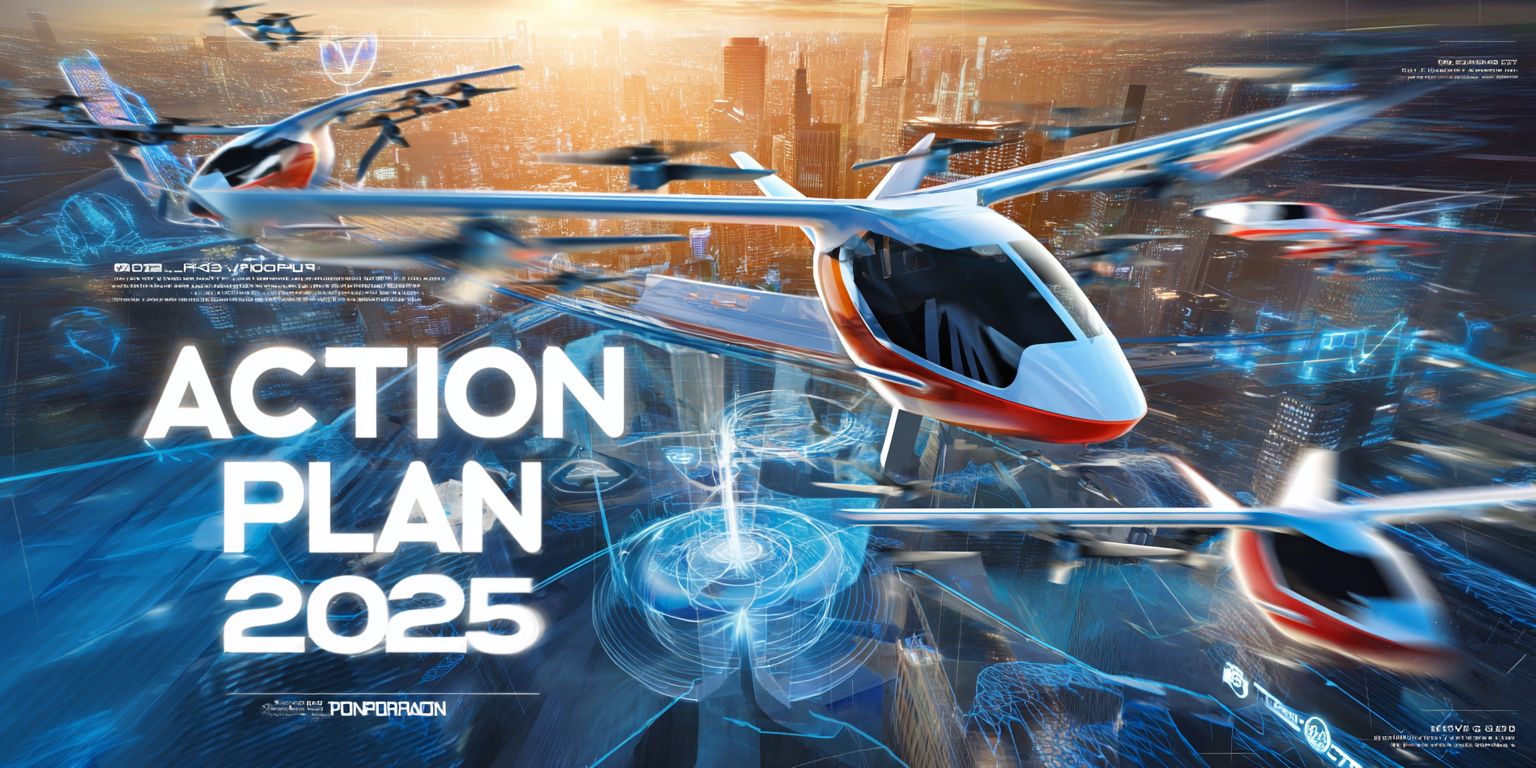Indonesia sits on an archipelago so vast that getting from Point A to Point B often feels like a test of patience and grit. Traffic clogs Jakarta’s veins, ferries plod between islands, and land routes choke on population and patchwork infrastructure. People and goods take hours, sometimes days, to travel what a bird could fly in minutes. Now, PT Whitesky Aviation is betting that “flying like a bird” will soon stop being a metaphor.
This August, the company broke out of the rotary-wing routine. It locked in a pre-order for 30 SkyDrive SD-05 eVTOL aircraft at Heli Expo Asia, hosted at the aptly named Cengkareng Heliport. SkyDrive comes from Japan, home to compact engineering and reliable machines. PT Whitesky, already a heavyweight in Indonesian chopper aviation, is rolling the dice not just on new hardware, but on a blueprint that could define mobility for the country’s next decade.
A Blueprint, Not Just a Purchase
Here’s what matters: this isn’t just a flashy order at an expo. PT Whitesky and SkyDrive formed an alliance that targets more than just hardware, extending into operations, ground networks, and real-world applications uptake. No one’s saying “one size fits all.” Instead, both firms recognize Indonesia is a patchwork of thousands of islands, mangrove-fringed cities, craggy mines, glossy towers, and villages ringed by rice paddies.
 SkyDrive SD 05 eVTOL
SkyDrive SD 05 eVTOL
SkyDrive gets its moment in the sun, but not by accident. The SD-05, their lead eVTOL aircraft, is a three-seater. Twelve electric motors drive this flying pod through the sky at a cool 100 kilometers per hour, with enough battery for urban hops: 15 to occasionally 40 kilometers. That’s a stretch from downtown to a suburb, or an arching leap over jammed bridges and tangled streets. The carbon fiber skeleton keeps things light but tough. Just over 13 meters across with blades out, the SD-05 lands on pads where a midsize car would sulk, so rooftop vertiports don’t need to eat up half a soccer field.
The distributed propulsion, twelve independent motors, matters. White-knuckled safety is crucial when you ferry people above crowded streets. Lose one rotor, and you fly on. Lose two? Still flying. That’s the kind of redundancy you expect in commercial jets, now shrunk down for eVTOLs flicking past city skylines. The aircraft also carries its weight, accommodating up to two passengers plus a pilot, or 350 kilos of cargo, depending on the route.
Establishing the Low Altitude Economy backbone
The flyover routes are mapped, not just for executives in a hurry but for everyday commutes. Whitesky says the first commercial flights target sightseeing runs above Jakarta: the kind of visibility move that builds public trust one paying customer at a time. They’re not stopping there. Already charted are network plans for intercity commuter links, logistics corridors, and even mining connections, where helicopter work has long been a necessary evil due to Indonesia’s rugged geography. Instead of only fielding charters and medevacs, they’re going for scheduled routes that shrink journeys for workers, goods, and even tourists who’d spend more time enjoying the view than fighting bottlenecks.
Behind this web, expect a superhub-and-spoke model. Think of Cengkareng Heliport as the anchor, with a set of satellite vertiports dotting Jakarta, satellite cities, and eventually out to mining compounds or island communities. Each pad is sized for the SD-05, complete with built-in chargers and maintenance. The aim? No idle aircraft waiting for infrastructure to catch up.
Certifying the Future Today
What makes this credible isn’t a cool concept video but regulatory muscle and solid experience. SkyDrive lodged type certification with Japan’s Civil Aviation Bureau, with the U.S. FAA reviewing in parallel. This isn’t “paper plane” territory. The same machine is slated for commercial debut after the Osaka World Expo wraps in 2026, and the goal is to roll out in Indonesia shortly after. Local authorities have started paving the regulatory runway, too, building on Whitesky’s established operator’s certificate and years of safe helicopter operations across the archipelago.

Whitesky’s pedigree means a lot here. Their helicopters crisscross the country, charters for business, medevacs for emergencies, lifts for mining crews, and even city-to-city hops for the rare commuter able to afford it. Their AOC 135-016 from the Directorate General of Air Communications puts them at the head of the queue to commercially deploy eVTOL aircraft under local rules. Their hangars already rest next door to Jakarta’s busiest airport, prime turf when every minute counts.
And Whitesky has been investing ahead of this curve. They added a Bell 429 VIP chopper to their fleet just this year, demonstrating a balance sheet and management discipline that enabled them to be first-movers on eVTOLs when others were still writing emails to manufacturers.
Why Now? Why Here?
Indonesia’s a textbook example of eVTOL economics and necessity. The archipelago’s more than 18,000 islands make “point-to-point” a logistical nightmare by traditional means. Urban density in Jakarta means roads hit gridlock faster than planners can upgrade them. You get two-hour commutes for 12-kilometer journeys, costing the nation upwards of $7 billion every year in lost productivity. In the east, miners sometimes have no choice but to ride helicopters to sites, chewing up time and budgets. It all feeds into a market for advanced air mobility projected at $9 billion by 2031, with a growth rate north of 35% a year.
Jakarta’s not alone. Other Indonesian metros struggle with congestion, and sprawling distances between city pairs or industrial hubs make eVTOLs not a nice-to-have but, in some scenarios, the only option that reconciles speed, cost, and available flat land for landing.
Helicopters paved the way, but they’re loud, expensive, and not the most fantastic neighbors in dense neighborhoods. With noise complaints and air pollution penalties rising, SkyDrive’s SD-05 is set to challenge the “old iron” with machines that are both quieter and nearly emission-free.
Regulatory Winds and a Regional Race
The groundwork’s not just physical. Indonesia’s regulators are pushing hard, opening the door for demonstrations from other major eVTOL players like EHang, and tuning the policy environment to support new mobility modes. The Asia-Pacific region is piecing together common reference materials for airworthiness, economics, and public acceptance, 24 states in all. Whoever shapes those standards early wins later.
Neighboring Singapore is already trialing its own eVTOL networks, and as other ASEAN capitals test hardware and policy, everyone watches to see who gets it right first. Whitesky’s experience in weathering Indonesia’s regulatory maze gives it a critical first-mover advantage. While new entrants pine for permissions, Whitesky lays foundations and gets local authorities used to the look and sound of electric aircraft on their skylines.
Unfolding the Big Bet: Can It Pencil Out?
The sticker price isn’t small. Each SD-05 runs about $1.5 million. Conventional helicopter operators closely monitor whether cost savings in fuel, lower maintenance, and cheaper “fill-ups” (thanks to electricity) can offset higher early costs and battery limitations. Indonesia’s weather, heat, humidity, and sudden storms will stress test these systems more than Expo flights in Japan ever could. Early daily utilization rates, reliability, and recharging speed will determine who succeeds and who fails.
But the potential advantages run deep. Quieter takeoffs and landings could unlock inner-city routes where helicopters once faced fierce pushback. Reduced emissions sit nicely alongside government plans to foster a local electric vehicle ecosystem and tempt major automakers (like Tesla) to build plants on Java or Sulawesi. PT Whitesky’s move feeds this battery-powered vision perfectly.
Whitesky aims to outpace rivals by securing prime spots for vertiports and spearheading a culture shift that views vertical mobility as a public good, rather than a luxury.
What Does It Look Like in Five Years?
If you live in Jakarta in 2028, the changes might sneak up on you. You could board an SD-05 in the city center, fly across roofs and rivers, and land in a new commercial zone in under ten minutes. Maybe your nephew takes his first flight to see the sea on his birthday, or someone in your family works a mine upcountry and commutes safely, away from the bulldust and roadblocks.
At that point, Whitesky isn’t just a helicopter operator with better marketing. It’s the backbone of an actual low-altitude economy. A new kind of airline, if you will, stretching under 1,000 meters above the ground, running what’s an electrical grid with wings over dense city blocks, highland valleys, and beyond.
This model’s success depends on real execution: certifying each aircraft, lining up vertiport construction with demand, weaving regulatory approval into expansion, and keeping costs from ballooning. Whitesky’s ripcord is its existing business and government contracts. It can weather a slow start by cross-subsidizing early services with proven helicopter revenues, letting the eVTOL fleet ramp up naturally as more Indonesians buy in.
Other countries will watch closely. If Whitesky and SkyDrive prove people will trust, board, and pay for this kind of service, the archipelago becomes a template for Lagos, Manila, Rio, or any place where roads just don’t cut it.

No single technology solves everything, but with this deal, Indonesia’s aviation future looks less like a crawl and more like a low, fast arc across sky and sea. PT Whitesky Aviation has done more than sign a purchase order. It’s started the first real experiment in making eVTOLs work for everyone, in one of the world’s toughest proving grounds for mobility. That’s what moving past the gridlock looks like, one flight at a time.




